Flesh and Blood has two main damage types: physical and arcane. Normal attacks do physical damage, and can be blocked by most cards in the game as well as by many pieces of armor. Arcane damage is only found in some classes; and while it's generally less efficient than physical damage, it makes up for it by being more difficult to stop. Cards don’t inherently block arcane damage as they do physical damage. However, that doesn’t mean it’s uncounterable – many methods are available to ward off arcane damage, and this article will seek to explain that in more detail for those looking to ward off Wizards and repel Runeblades!
Arcane Barrier
First, the most basic (and commonplace) way to stop arcane damage is with the Arcane Barrier keyword, found on the classic Nullrune set of equipment from Arcane Rising, as well as on some other pieces of equipment.
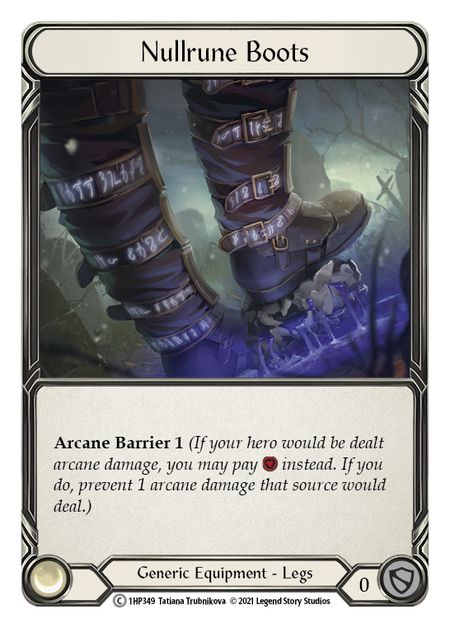
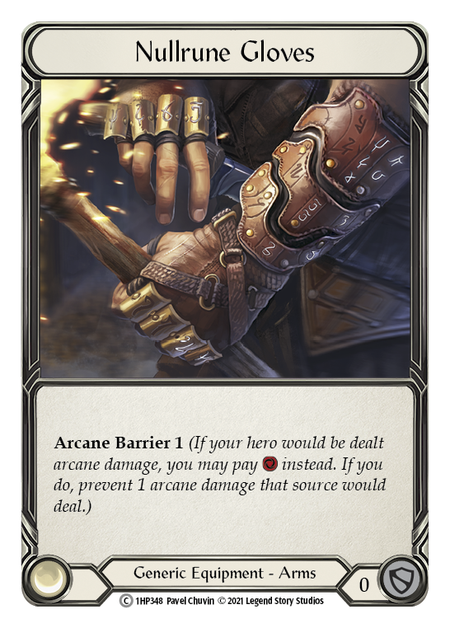
With this keyword, one can spend resources in order to prevent incoming arcane damage. One interesting quirk of Arcane Barrier is that you cannot “underspend” to get only part of the effect – even if you’re only faced with one arcane damage from a certain source, an item with Arcane Barrier 3 will require you to spend three resources in order to block three damage from that source. Not very efficient!
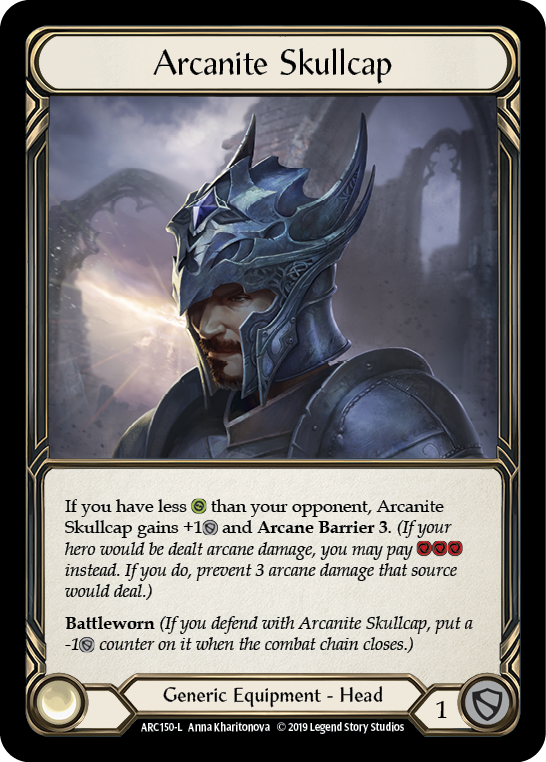
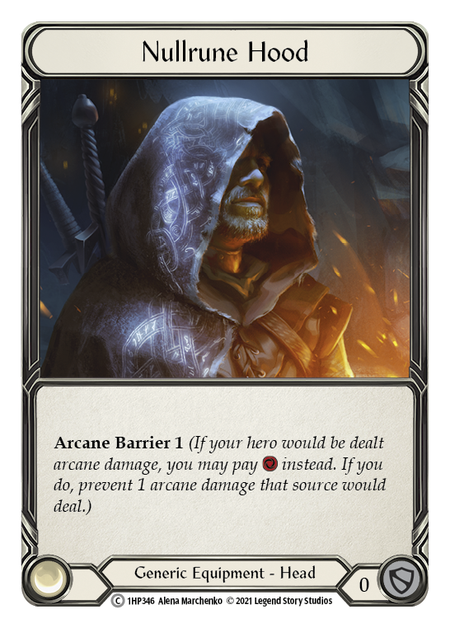
For this reason, the venerable Arcanite Skullcap is actually much worse at defending against arcane damage than it would imply – not only is it conditional on having lower life than an opponent, but also it often defends inefficiently against small sources of damage. A humble Nullrune Hood is actually much more effective at stopping arcane damage from an opponent who is likely to present many small sources – indeed, Arcanite Skullcap’s Arcane Barrier frequently goes unused, even in matchups like Runeblade mirrors where it might otherwise be relevant; and while it seems like it might be a good idea to bring against a Wizard, in practice the conditional nature of this ability makes it a dubious selection!
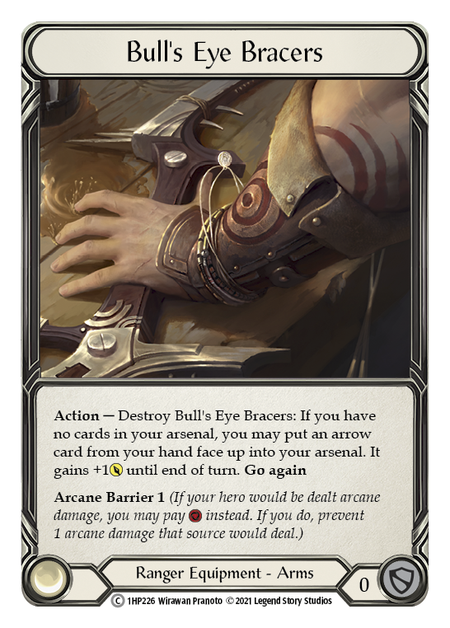
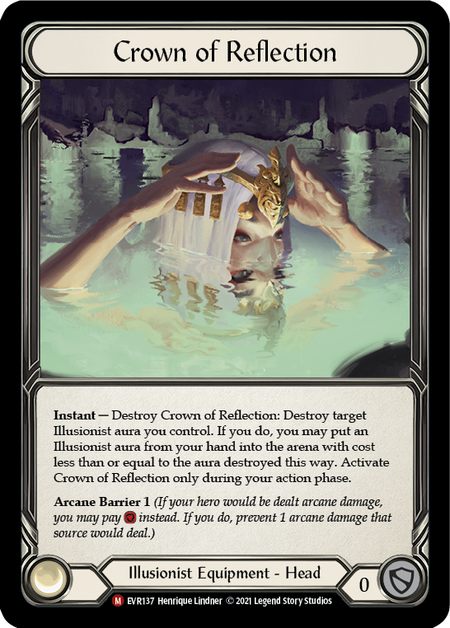
In general, it’s often prudent to equip an item with Arcane Barrier 1 against an opponent who is likely to threaten many small sources of arcane damage (like a Runeblade and their Runechants, or the auras made by Illusionists). Against Wizards, who can often do more arcane damage at a time, this is likely to prove insufficient and one may wish to bring more Arcane Barrier to the table.
Many decks stop at a “total Arcane Barrier” of 3; this way, they can pitch a single blue card in order to block three arcane damage, which is relatively efficient. More defensive builds might go up to Arcane Barrier 4 or even 5 in the hopes of being more reliably able to stop effects based on dealing arcane damage!
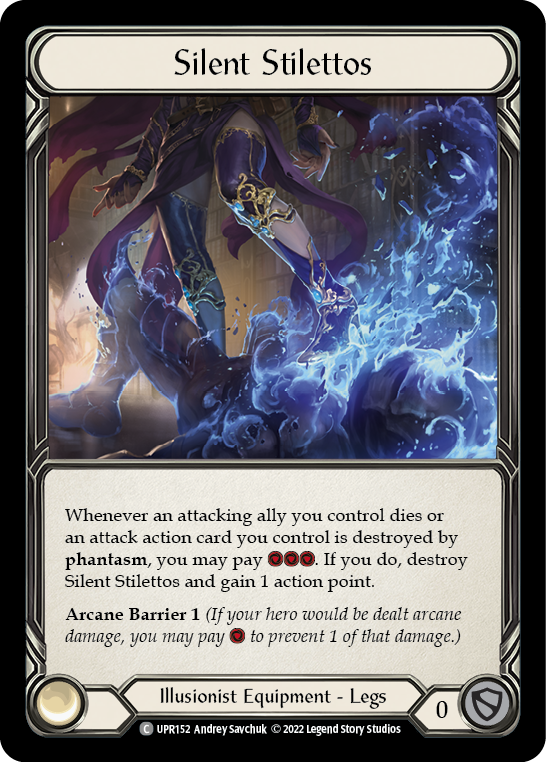
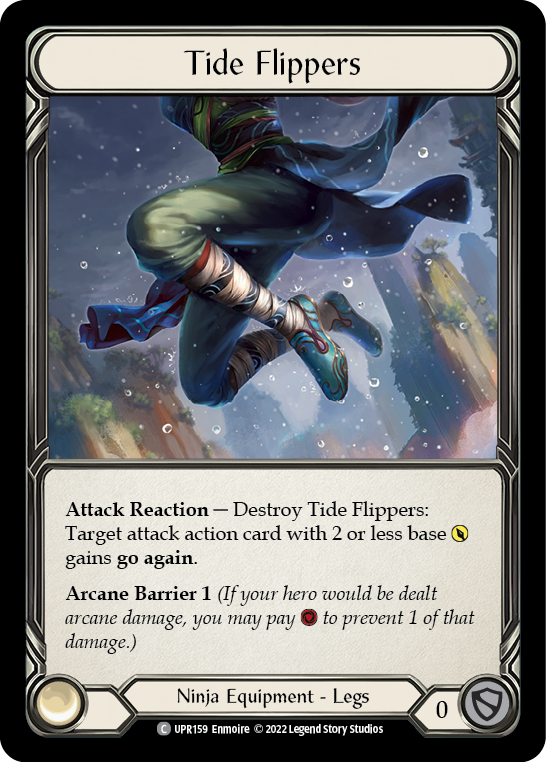
Since Arcane Barrier doesn’t do anything against opponents who don’t do arcane damage, Nullrune items aren’t going to be a good selection in most matchups, so they will likely end up taking “sideboard” slots – you really don’t want to find yourself with a bunch of equipment that only works against arcane damage when you’re facing off against an aggressive physical damage deck! However, some heroes have Arcane Barrier on the equipment that they might already otherwise be playing, making this easier – for example, Dash, Inventor Extraordinaire is likely to be playing Achilles Accelerator already, granting a “built-in” Arcane Barrier 1 without having to sideboard.
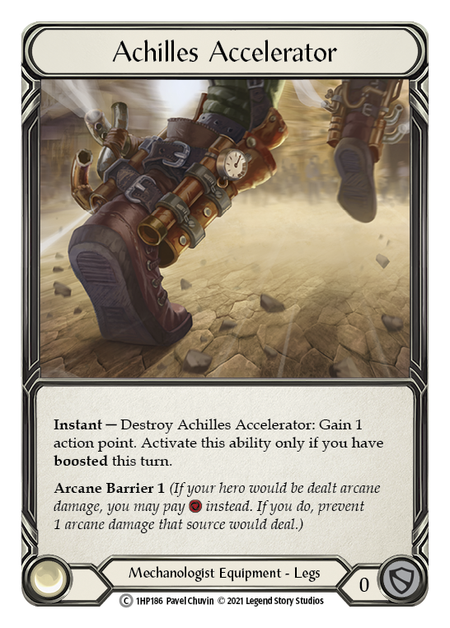
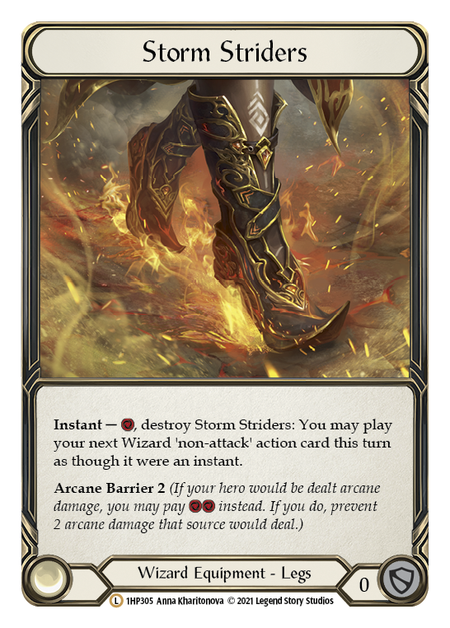
One downside of Arcane Barrier is that it doesn’t defend on its own – it just allows you to pitch other cards to defend. Since arcane damage sources are usually inefficient, that ends up being fine much of the time – but if you find yourself with an all red hand, your Arcane Barrier isn’t going to be very helpful! As a result, Arcane Barrier tends to be more reliable and effective for decks that run more blue cards.
Options for Red-Heavy Decks
But what if your deck is very red-heavy? Well, there are other options that might prove relevant in this area.
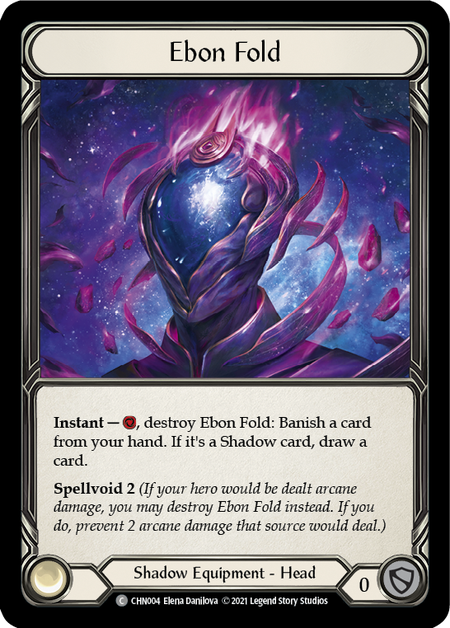
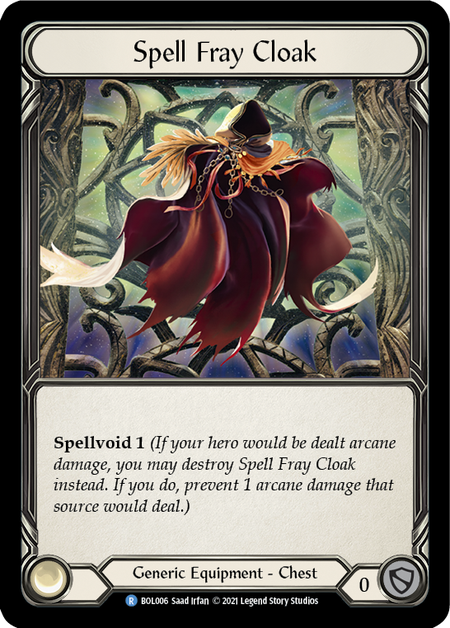
The first and easiest is Spellvoid. Spellvoid items, like Spell Fray Cloak or Ebon Fold, only work once per game, but they act more like normal armor does against physical attacks, blocking arcane damage without having to pitch anything at all! This allows a deck to block some arcane damage while still maintaining pressure of its own. These items can be especially strong in Blitz, where games tend to be shorter – not only is there less time for the lack of “sustainable” defense to be a problem, but also they allow you to keep your momentum more.
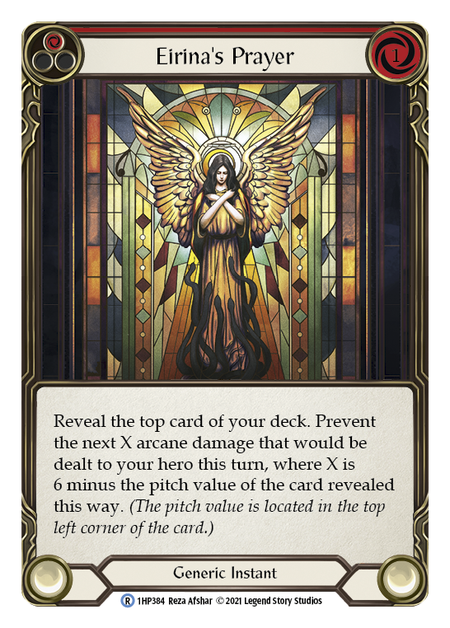
However, Spellvoid might not be enough. One card that is especially useful for red-heavy decks is the humble Eirina’s Prayer – a card that can block large amounts of arcane damage at a time and even split that block across multiple sources of damage! This card is very efficient against arcane damage, but it suffers from being somewhat unreliable in decks without as many reds (at least if you haven’t seen your top card!). On the other hand, if a Kano player comes in with a Lesson in Lava buffed by both Crucible of Aetherweave and Metacarpus Node for five damage total – thinking that there’s no way for you to stop all that damage with the limited Arcane Barrier you have equipped – only for you to surprise them with Eirina’s Prayer and reveal a red card, they might be very unhappy to see their big play stopped by just one defensive card!
Other Defenses
Another option against arcane damage is to run things that provide general damage prevention. Cards like Dissipation Shield, Steadfast, and Oasis Respite block damage in general – physical or arcane – and hence can be used as flexible options. This can be especially useful because these cards can play a flexible role in one’s sideboard; they’re usable both in matches where you want more defensive effects against physical damage, and those where stopping arcane damage is the order of the day.
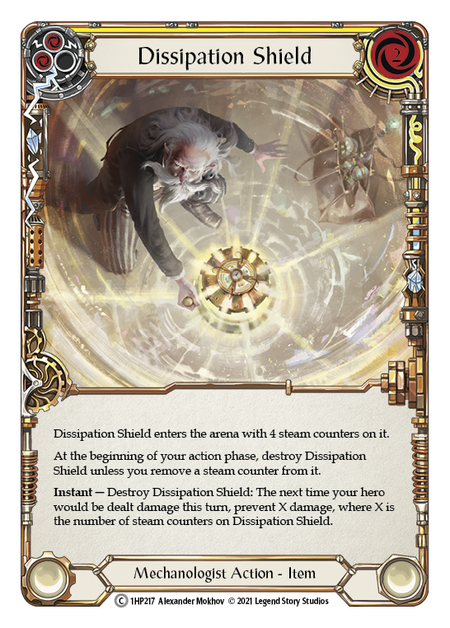

For instance, a Guardian deck might run Steadfast both against aggressive Dorinthea opponents and also as a counter to Kano players trying to inflict large amounts of arcane damage at a time.
Oasis Respite is an especially interesting new option. At red, it can block four damage. While the healing is unlikely to apply against a Wizard and the fact that the damage prevention only applies to one source does mean it’s weaker than an Eirina’s Prayer that hits red, this card gains a lot in flexibility because it is playable in several other matchups. Eirina’s Prayer may be better (though less reliable) for some builds, but I think Oasis Respite is applicable in many more situations.
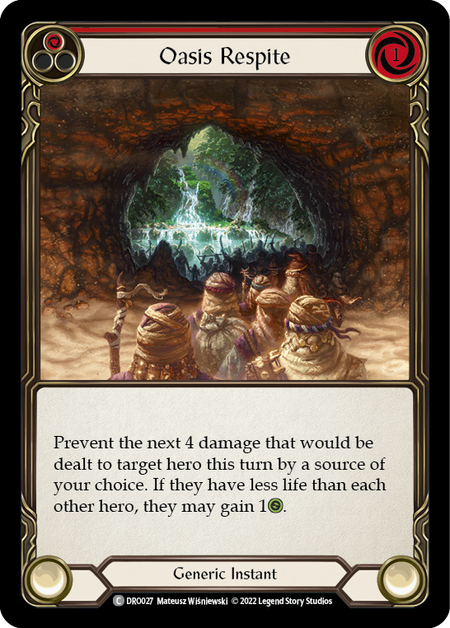
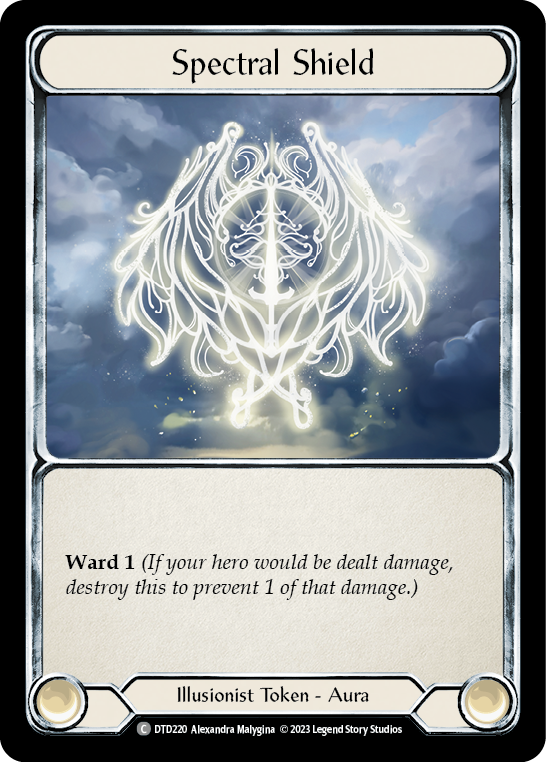
Similarly, the Spectral Shield tokens that Prism can generate work against both arcane and physical damage, so if Prism can get cards into soul and turn them into Spectral Shields, she can not only increase her offense but also provide a buffer against incoming Arcane threats as well.

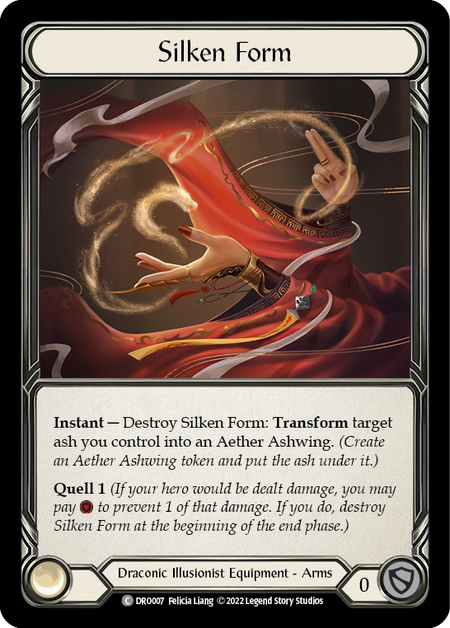
The new Quell and Ward mechanics also offer an opportunity to defend against arcane damage. Quell behaves similarly to Arcane Barrier, but can only be used on one turn before it self-destructs, making it generally a weaker option (though nice to have if it’s on a piece of equipment you’d be playing anyway). Ward acts as a form of one-source damage prevention and– like Oasis Respite or other sources of general damage prevention– allows for defensive options that can apply either to arcane or physical damage. That said, both these mechanics are available on a relatively small number of cards as of this writing; in the future, they may play more of a role, but for now I’m not sure how often we’ll see them. Dromai players might be the ones best poised to benefit from these mechanics, as both Silken Form (for Quell) and Sand Cover (for Ward) are already looking like solid picks for the Draconic Illusionist!
Putting It All Together
So, we’ve seen some of the options that one can use against arcane damage. The next step is to figure out how these options best fit into the particular deck you are working on. I personally think there are two main categories of arcane threat to plan for:
- Many small sources. Runeblades tend to do this, since Runechants always come in for 1-2 arcane damage at a time. In general, Arcane Barrier 1 is likely sufficient in these cases, but decks that want to be especially defensive might equip Arcane Barrier 2 in order to be able to fully block effects like Rosetta Thorn.
- Larger individual sources. Unlike Runeblades, Wizards can often present larger amounts of damage at a time, and might only hit you with one source of arcane damage in a turn, making Arcane Barrier 1 all but useless. Against Wizards, I typically try to equip at least Arcane Barrier 3 (allowing blues to block efficiently), and in some cases having options to go beyond that may well prove prudent!
In thinking about how your deck wants to defend, you also want to consider both your own pitch curve– red-heavy decks probably won’t get much use from Arcane Barrier and may do better with Spellvoid– as well as combinations of different defensive options.
For example, back in the Crucible of War meta, I ran a Warrior deck that was quite light on blues, and against Wizards I would equip Nullrune Hood, Nullrune Gloves, Fyendal's Spring Tunic, and Refraction Bolters - then also side in three copies of Eirina’s Prayer (red). This meant that, while I could not reliably block efficiently, if I needed to I had a lot of arcane defense available at key moments – especially if I put Eirina’s Prayer into arsenal at important junctures. These days that Eirina’s Prayer would perhaps be replaced by Oasis Respite in this style of build, but a similar principle might well still apply.
In thinking about how your deck wants to defend, you also want to consider your own pitch curve.
Similarly, during the Monarch blitz meta, I was playing Chane. At that time, Kano was considered one of the top decks in the format (though hard to play), but I had great success against Wizards by running Nullrune Robe, Gloves, and Boots as well as Ebon Fold! This allowed me to not only have Arcane Barrier 3 available normally, but to have Spellvoid 2 to back it up when I needed to stop a bigger effect or just to provide a bit of extra life at the end of the game. This proved very difficult for Kano opponents to deal with in the span of a short Blitz game. (Shoutout to Brendan Patrick, Dante Delfico, and perhaps others I had tested with for having convinced me of the merits of this approach!)
Lastly, some decks may have “just race” as a significant part of their approach to dealing with arcane damage! Red-heavy Ninja or Mechanologist decks can sometimes just get to lethal faster than the Wizard can while not doing very much defense. That said, even a boost Dash build or similar probably improves its percentages against Kano by including some arcane defense options.
In conclusion, arcane damage may be more complex to defend against than physical damage, but that doesn’t mean that there are no options available. Not only are there a lot of tools one can use, but many of them are generics that can be run by any class. With Kano more prominent in Classic Constructed than he once was and Iyslander offering another Wizard option, it may well prove prudent to make a plan as to how your deck will respond to arcane threats!
Music from Chosic | Monplaisir - Stage 1, Level 24; Le gris le bleu d'une profonde humilite






